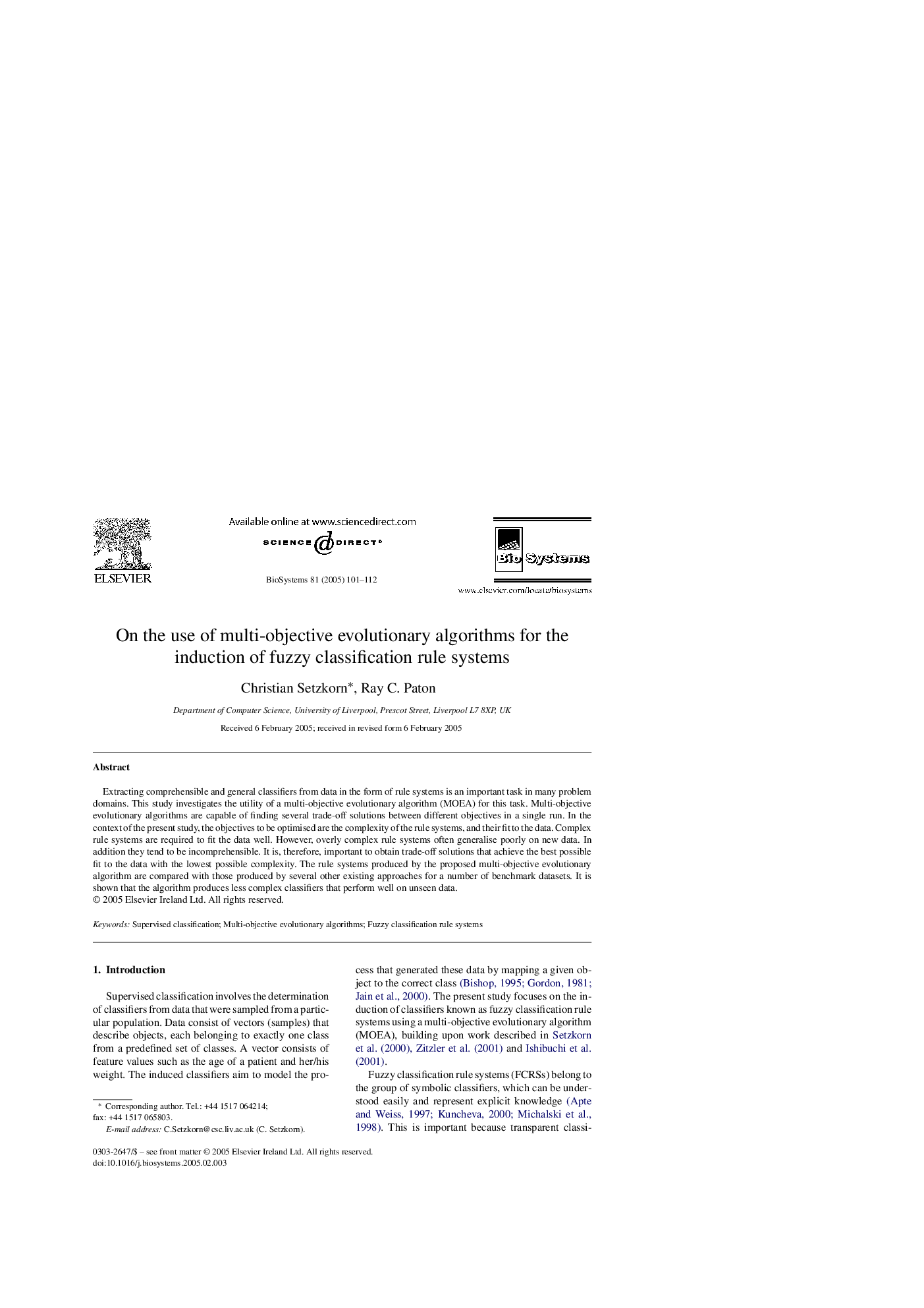| Article ID | Journal | Published Year | Pages | File Type |
|---|---|---|---|---|
| 10884700 | Biosystems | 2005 | 12 Pages |
Abstract
Extracting comprehensible and general classifiers from data in the form of rule systems is an important task in many problem domains. This study investigates the utility of a multi-objective evolutionary algorithm (MOEA) for this task. Multi-objective evolutionary algorithms are capable of finding several trade-off solutions between different objectives in a single run. In the context of the present study, the objectives to be optimised are the complexity of the rule systems, and their fit to the data. Complex rule systems are required to fit the data well. However, overly complex rule systems often generalise poorly on new data. In addition they tend to be incomprehensible. It is, therefore, important to obtain trade-off solutions that achieve the best possible fit to the data with the lowest possible complexity. The rule systems produced by the proposed multi-objective evolutionary algorithm are compared with those produced by several other existing approaches for a number of benchmark datasets. It is shown that the algorithm produces less complex classifiers that perform well on unseen data.
Related Topics
Physical Sciences and Engineering
Mathematics
Modelling and Simulation
Authors
Christian Setzkorn, Ray C. Paton,
